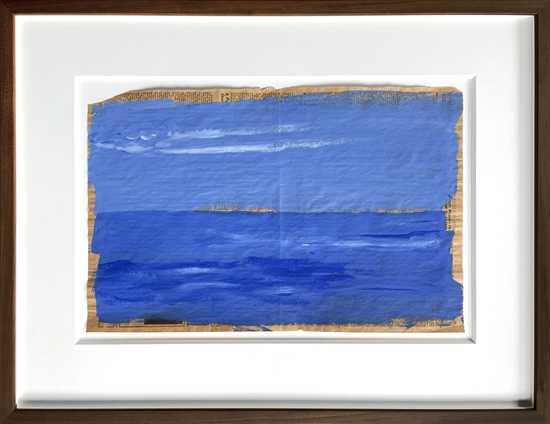About This Lot
Paul Thek was an American artist known for his eclectic paintings, sculptures, video, and performance work. Throughout his practice, Thek combined elements of art history, existential anxiety, and contemporary culture into art that posed both formal and conceptual questions. “I sometimes think that there is nothing but time,” the artist once said, “that what you see and what you feel is what time looks like at that moment." The present work is a part of Thek's Newspaper Paintings, a series of varying blue horizons painted on a newspaper. In this work, he painted where the sea meets sky, but others include swimmers or islands.
Born on November 2, 1933 in Brooklyn, NY, he studied at the Art Students League, Pratt Institute, and Cooper Union School of the Arts in New York. He began collaborating with conceptual artists in the early 1960s, including Eva Hesse and Peter Hujar, and gained critical attention in the American art scene before moving to Europe in 1962. Living in Italy for much of the 1970s, Thek began producing his most iconic works: The Technological Reliquaries, wax sculptures of body parts displayed in Plexiglas vitrines. By his 1976 return to New York, Thek had lost the critical support he had once enjoyed, and would go on to live in relative anonymity and poverty until his death from an AIDS-related illness on August 10, 1988 at the age of 54. Posthumously, Thek’s work has received widespread acclaim, notably the Diver, A Retrospective exhibition at the Whitney Museum of American Art in 2010.










